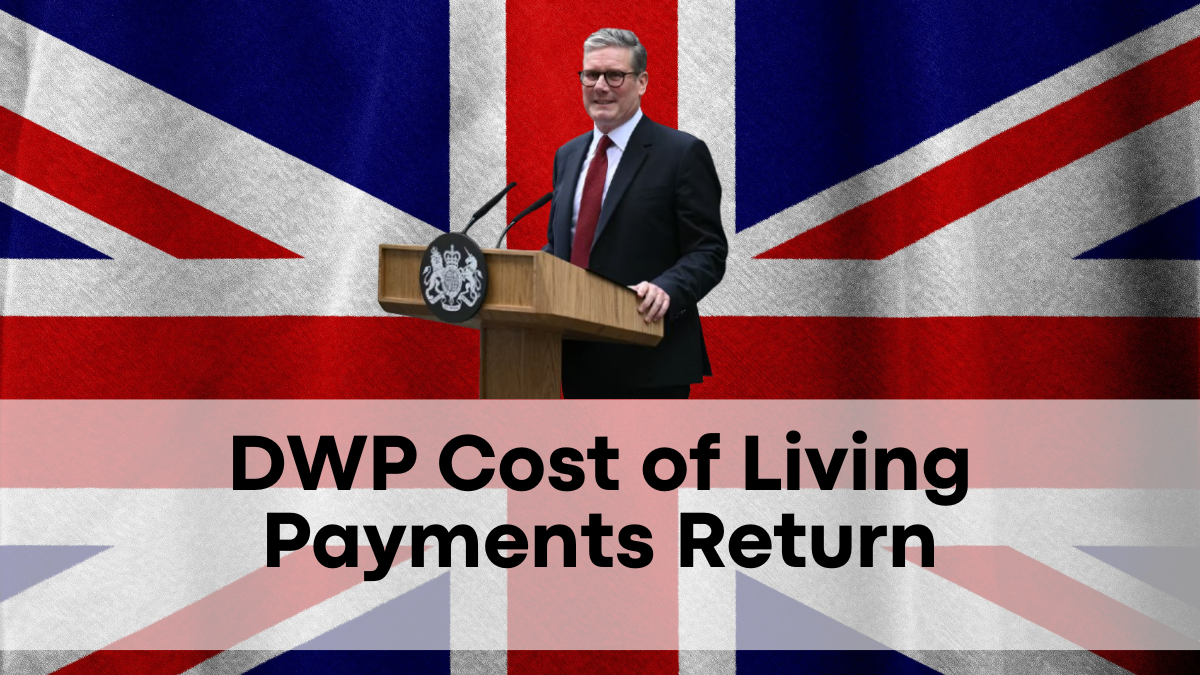The Department for Work and Pensions (DWP) has introduced the 2025 Cost of Living Payments to support millions of UK residents struggling with rising living expenses. These payments are designed to provide relief from inflation-driven challenges, including increased food prices, soaring energy bills, and overall higher living costs. Below is a detailed overview of this initiative, including eligibility, payment details, and tips to maximize its benefits.
DWP Cost of Living Payments Return
| Aspect | Details |
|---|---|
| Program Name | 2025 DWP Cost of Living Payments |
| Target Beneficiaries | Low-income families, pensioners, and vulnerable individuals |
| Payment Amounts | £301 (standard) and £100–£500 (vulnerable groups) |
| Payment Timelines | Spring, Summer, and Autumn 2025 |
| Application Requirement | Automatic for qualifying benefit recipients |
| Learn More | Visit Official UK Government Website |
Cost Of Living Payments
The Cost of Living Payments provide financial grants to individuals and families receiving means-tested benefits or tax credits. Initially launched in 2022, these payments have become a core part of the UK government’s strategy to address economic pressures caused by inflation.
Addressing Economic Challenges
UK households continue to face growing financial burdens:
- Rising Food Costs: Some grocery items have seen price increases exceeding 19%.
- Energy Costs: Many families are paying double or even triple their energy bills compared to 2021.
- Inflation Across Essentials: Costs for rent, transportation, and other necessities have significantly increased.
These payments act as a crucial lifeline for millions, helping to alleviate financial stress and ensure access to basic needs.
Who Is Eligible
The DWP Cost of Living Payments are available to individuals receiving specific benefits.
Qualifying Benefits
To be eligible for the payments, claimants must receive at least one of the following:
- Universal Credit (UC)
- Income Support (IS)
- Pension Credit
- Income-based Jobseeker’s Allowance (JSA)
- Income-related Employment and Support Allowance (ESA)
- Child Tax Credit (if not receiving UC)
- Working Tax Credit (if not receiving UC)
- Housing Benefit for low-income households
Changes In Eligibility
The 2025 reforms include:
- Increased Income Thresholds: More individuals will qualify, even if their income has slightly risen.
- Support For Vulnerable Groups: Extra financial assistance is available for people with disabilities, carers, and those with high energy costs.
- Automatic Payments: Payments will be processed automatically for those receiving qualifying benefits.
Payment Amounts And Schedule
The amount received depends on the claimant’s circumstances and benefit type.
Payment Breakdown
- Standard Payment: £301 for most eligible claimants, distributed in three installments throughout the year.
- Vulnerable Group Payments: An additional £100–£500 for individuals requiring extra support, including those with disabilities or dependents needing care.
Payment Schedule
| Payment Type | Expected Timeline |
|---|---|
| First Payment | Spring 2025 |
| Second Payment | Summer 2025 |
| Third Payment | Autumn 2025 |
Payments are automatically deposited into the same bank account used for receiving benefits.
If You’re Not Eligible
If you do not qualify for the Cost of Living Payments, several alternative forms of assistance are available:
Alternative Support
- Local Welfare Assistance: Many local councils provide emergency funds or grants to cover essential living costs.
- Energy Bill Assistance: Programs like the Warm Home Discount offer up to £150 off winter energy bills for eligible households.
- Debt Advice Services: Organizations such as Citizens Advice and StepChange provide free financial counseling and debt management advice.
Case Study
Sarah, a 35-year-old single mother of two, has been struggling with rising household expenses. Her rent, grocery bills, and energy costs have all increased significantly, leaving her budget stretched.
In Spring 2025, Sarah receives a £301 Cost of Living Payment, which helps her cover overdue energy bills. She also qualifies for an additional £200 through the vulnerable group payment due to her children’s needs. This financial support allows Sarah to maintain her household budget without sacrificing essentials like food and utilities.
Tips To Maximize Your Cost Of Living Payment
To make the most of your Cost of Living Payment, consider the following strategies:
- Prioritize Essential Expenses: Use the funds to cover immediate needs such as rent, utilities, and groceries.
- Create A Budget: Plan your weekly or monthly spending to monitor and control expenses.
- Save For Emergencies: Allocate a portion of the payment for unexpected costs like medical bills or repairs.
- Explore Discounts: Check for programs offering reduced prices on groceries, transport, or energy for low-income households.
FAQs About Cost Of Living Payments
What Are The Cost Of Living Payments?
The Cost of Living Payments are government-provided financial grants designed to help individuals and families manage rising living expenses.
Who Is Eligible For These Payments?
Anyone receiving qualifying benefits, such as Universal Credit, Pension Credit, or Income Support, is eligible.
Do I Need To Apply For The Payments?
No, payments are automatically disbursed to eligible individuals.
How Much Will I Receive?
Most claimants will receive £301, with additional payments of £100–£500 for vulnerable groups.
When Will Payments Be Made?
Payments are scheduled for Spring, Summer, and Autumn 2025.
What If I Am Not Eligible?
If you do not qualify, alternative support such as local welfare assistance, energy discounts, and financial counseling is available.

